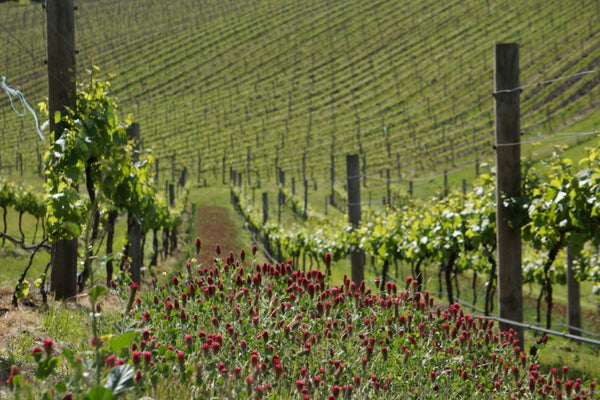
SPOTLIGHT ON GEELONG by Nadia Bailey
From the Moorabool Valley to the Bellarine Peninsula and
Surf Coast, good things are happening in the wild country of Melbourne’s west.
If you stand in a certain spot in the grounds of Scotchmans Hill and look in one direction, you can see the gentle blue lilt of Port Phillip Bay. Look in the other, and you can see the familiar skyline of Melbourne: the distant shapes of high-rise buildings, the twinkling lights of the MCG. Viewed at sunset, with a glass of something savoury and red in hand — well, it’s pretty hard to beat.
It’s this view that Robin Brockett, chief winemaker at Scotchmans Hill, has been enjoying for almost three decades. Quietly spoken and charismatic, Brockett is something of a legend around these parts.
“Up until 1990, there were only four or five vineyards on the Peninsula and there were only two employed winemakers in the whole of eelong,” he recalls. “Now, there’d probably be 40.”
You don’t have to look very far for evidence. Within a breezy three minute drive of Scotchmans Hill, there are four other wineries — Terindah Estate, Jack Rabbit Vineyard, Bennetts and Bellarine Estate — plus a whiskery at the bottom of the hill. Venture a little
further and you’ll find Oakdene Vineyards, a slightly madcap es- tate where the cellar door is styled as an upside-down house and eccentricity goes hand-in-hand with luxury accommodation and an assured fine dining restaurant.
“There’s a lot more individuality in the winemaking here than what you find in other areas,” explains Brockett. “There’s not a single corporate winemaker here. It’s not rustic exactly — it’s a more salt of the earth, dirt-under-the -nails mentality.” This hands-on approach means that things are much more personalised. “In a lot of places around here, it’s the actual winemakers who serve you at the cellar door, so you’re going to get a different experience.”
The Bellarine Peninsula — where Oakdene is located — is characterised by fertile, loamy soils, a relatively temperate climate, ocean breezes. The pinot that comes out of the area tends towards a sweetness and generosity of fruit with fine tannins. These are big, juicy wines. Drive an hour west and everything changes. The scenery transforms from coastal vistas to sweeping views of hillside vineyards and stately gums. In Geelong’s Moorabool Valley, the environment is drier, the soil rockier, the landscape more rugged. In other words, it’s ideal pinot country.

“We’re lucky to have this beautiful interaction of cool sites and really mean soils,” says Ray Nadeson of Lethbridge, a small, gung-ho winery that’s producing some of the most fascinating pinots in the region.
According to Nadeson, it’s the combination of low vine vigour and limestone and basalt- rich soils that deliver the Moorabool signature: dark, tannic wines that feel much more savoury and structural than many pinots you’ll come across.
“We don’t have fruity wines here. If you want fruit, drink fruit juice,” he laughs.
A little further down the road, Provenance Wines is also making its mark on the region. A year after opening, the historic bluestone paper mill turned light-filled cellar door has become one of the region’s buzziest hot spots — with a view overlooking the cascading Buckley waterfalls of the Barwon River, it’s easy to see why.
No visit to the region is complete without a stop at Clyde Park. With both cellar door and bistro offering panoramic views of the Moorabool Valley, it’s the kind of place that invites the idea of a leisurely lunch over a few glasses of extraordinarily good single- estate pinot noir —
something that Terry Jongebloed is rightly proud of. “We were probably the first out here to do tucker, sit down and talk to people and do more than just wine tasting,” he explains.
In the 40 odd years that he’s been in the wine business, he’s seen pinot go from underdog to over- lord. “Australian pinot is getting recognised on the international stage — the strength of what the Yarra has done, what Mornington’s done and what Geelong’s doing is really superb,” he says.
“Ten years ago, you wouldn’t find a Geelong pinot on a wine list in Melbourne. Today, most good wine lists have all got a Geelong pinot.
The region understands its varieties — it knows that pinot noir is king.”